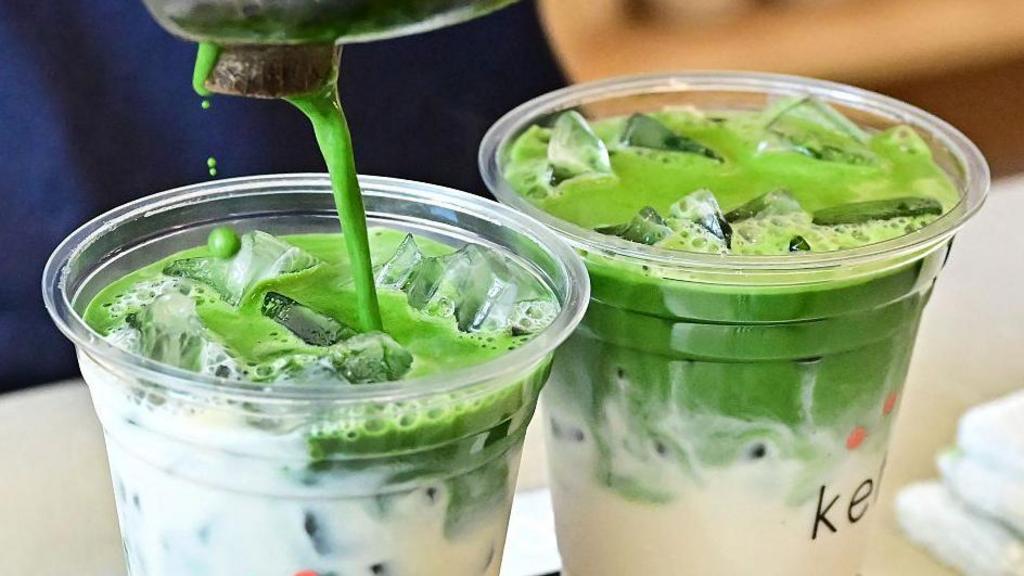A global phenomenon, matcha’s popularity continues to surge. The vibrant green Japanese tea is now a staple in various products, from Starbucks lattes in the UK to Krispy Kreme doughnuts in Singapore.
Social media is a key driver of the global matcha trend, with influencers actively sharing brewing techniques, reviews, and innovative recipes. The hashtag “Matcha Tok” has garnered tens of millions of views.
This growing interest is also linked to the resurgence of tourism in Japan following the pandemic. As reported by the BBC, the country’s weakened currency has not only made it a more attractive destination but has also fueled demand for Japanese goods.
Amid this surge in popularity, demand for matcha powder is rapidly escalating. Lauren Purvis, a US-based tea importer, noted to the BBC that her customers are witnessing a month’s supply of matcha being depleted in mere days.
“Some cafes are even requesting a kilo per day, such is their determination to keep up with demand,” explains Ms. Purvis, who operates Mizuba Tea Co.
However, this heightened demand, combined with reduced tea crops due to heatwaves and US tariffs on Japanese imports, is contributing to rising matcha prices.
Matcha, prized for its health benefits, caffeine content, and distinctive flavor, is traditionally produced through a centuries-old and highly specialized process.
It is derived from green tea leaves known as tencha, cultivated under shade for several weeks during growth. This crucial step is essential for developing the tea’s signature “umami” flavor, a savory taste that complements its natural sweetness.
The leaves are harvested, dried, and then meticulously ground into a fine powder using stone mills, which can yield only about 40g (1.4oz) of matcha per hour.
In recent months, growers have faced significant challenges as record-breaking heatwaves have impacted crops.
The Kyoto region, responsible for approximately a quarter of Japan’s tencha production, has experienced poor harvests due to hot weather, despite soaring demand.
The country also faces a shortage of farmers as its population ages and not enough younger people go into the industry.
Shops in Uji, a city in Kyoto renowned for its matcha, often find their shelves quickly emptied by tourists shortly after opening their doors.
Consequently, many retailers have implemented limits on the quantity of matcha customers can purchase.
Camellia Tea Ceremony, based in Kyoto, now restricts customers to one tin of matcha each, following a doubling in visitor numbers over the past year, according to director Atsuko Mori.
Tea master Rie Takeda also reports closely monitoring matcha stocks, as orders that previously arrived within days can now take over a week.
Ms. Takeda works for Chazen, a Tokyo-based tea ceremony chain that hosts traditional rituals, serving matcha to guests.
Due to shortages, tea prices at Chazen’s outlets have increased by approximately 30% this year.
“[The demand] is good,” Ms. Takeda stated through a translator. “It’s a gateway for more people to know about Japanese culture.”
The increased popularity has also attracted more growers.
Matcha production nearly tripled between 2010 and 2023, as reported by Japan’s agricultural ministry.
The ministry also indicated that green tea exports, including matcha, rose by 25% last year, reaching 36.4 billion yen (£180 million; $250 million).
This surge in matcha’s popularity has led to a movement advocating for more mindful consumption.
Advocates are calling out those perceived as hoarding matcha or profiting from its popularity. Others are urging tea drinkers to be mindful of their consumption and to savor matcha in its purest form, rather than using it merely as an ingredient in recipes.
Ms. Mori expressed that it is “a bit sad” to see high-grade matcha used in cooking, where its delicate flavor is often lost, or stockpiled for resale.
“Matcha is the highest grade of tea and it’s so special to us. So there’s a bit of a contradiction when I hear stories about how it’s resold or used in food.”
The Global Japanese Tea Association is encouraging the use of lower-grade matcha from later harvests, as it is more abundant and better suited for culinary applications.
It also notes that high-grade matcha often loses its nuanced flavor when used in drinks like lattes.
“Promoting awareness of these distinctions helps ensure Japanese tea is enjoyed with respect, while supporting the craft and tradition behind it,” the association states.
The association also anticipates further price increases due to tariffs imposed by the US on Japanese imports.
On Tuesday, Washington and Tokyo announced a trade agreement that will introduce a 15% import tax on Japanese products entering the US.
Matcha distributors like Ms. Purvis are preparing for the impact. The Oregon-based entrepreneur reported a surge in orders of over 70% in early July, ahead of the deadline for the two countries to reach a trade agreement.
“As Japanese tea is not grown in the US, there is no American industry under threat that tariffs need to protect,” she stated. “We hope there will be a realization that specialty tea should be exempt.”
Despite the challenges posed by soaring demand and limited supplies driving up prices, there is some optimism on the horizon.
At least one matcha cafe chain anticipates that prices may ease in the future, although not immediately.
“Low quality matcha is selling for a high price, and we think that this will no longer be a viable business,” Masahiro Nagata, co-founder of the Matcha Tokyo, told the BBC.
“There is a boom at the moment and demand is growing rapidly, but we think that will calm down a bit in two to three years.”
One woman who took part in the pilot says it only “scratches the surface” of food bills.
Authorities and local hunters have practiced their response to potential bear attacks in a simulated drill.
Households are trading down or making simpler meals to save money on groceries, research shows.
Sanseito has won over Japanese voters with its warnings against a “silent invasion” of foreigners.
The result could destabilise Japan’s government at a pivotal moment in trade negotiations with the US.

